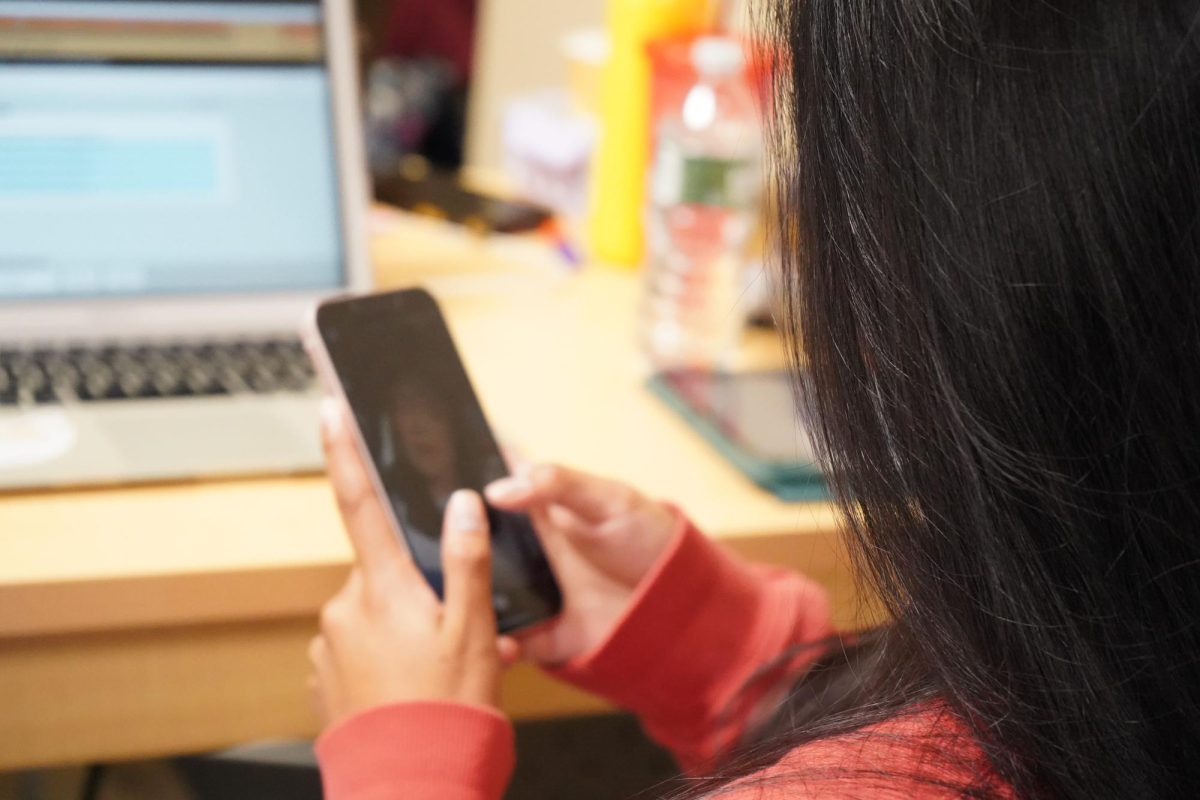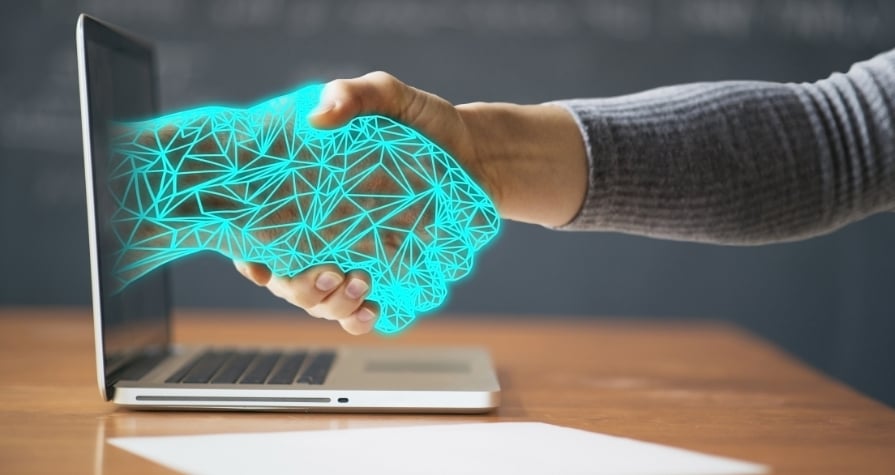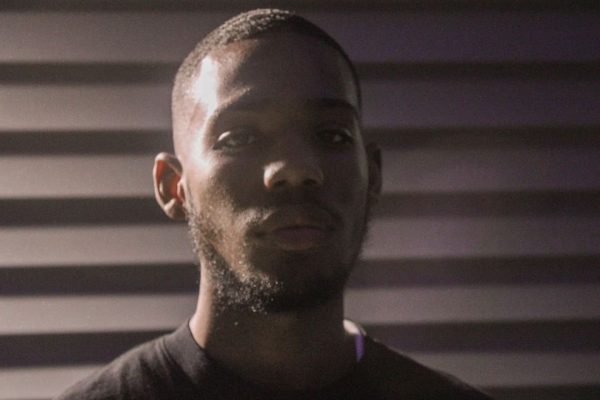A college student can’t snort it or shoot it. Or drink it or gamble it. There is no support group readily available, and one doesn’t have to go to lengths to get it.
Odds are, it’s already in one’s hands. He or she is likely using it right now.
According to the Social Media Addition Center, the number of college students becoming addicted is staggering, as a simple statistic states that in a virtual world, people talk about themselves 30 percent of the time.
Once they are online, that number balloons to 80 percent.
“Social media use becomes problematic when someone views social networking sites as an important coping mechanism to relieve stress, loneliness, or depression,” says the center’s website.
Social Media Addiction is something that plagues college students all around the world, as it has all become a huge part of their lives in the past 10 years. Social Media addiction is the use of social media compulsively and excessively, to the point where it hinders your ability in everyday life.
Instantly putting a phone in their hands and if using it alone, a social media platform can take over the mind of a student. The center claims that “self-disclosure on social networking sites lights up the same part of the brain that also ignites when taking an addictive substance.”
Whether it is Instagram, TikTok, or any other social media platform in general, social media is a norm of communication on college campuses. Whether it is used to promote clubs all around the campus or events for others to attend, it can be a distractor. Despite helping students learn any other external information academically, social media can be a helping hand but also a curse in the making.
Some students usage takes over their life. According to the addiction center, some people check social media apps near 60 times in a week, and those same people are more likely to feel “socially isolated and depressed” as opposed to someone who checks the apps about nine times a week.
Some relate their problems to others on social media platforms, where platforms like Instagram, TikTok, and many others have their fair share of quickly creating distractions for those who must focus on what is needed. Some experts feel they are causing students to fall into a world of illusion, as some cannot differentiate between what is real and what is not.
Seeing an individual becoming organized can harm viewers’ self-esteem due to scenarios created in their heads stating, “Why am I not in that position?” Those who want their act together can make it happen, but it bothers them because of what social media is being projected towards them.
Mercy University Students Damien Paez and Brian Jean expressed their thoughts on social media.

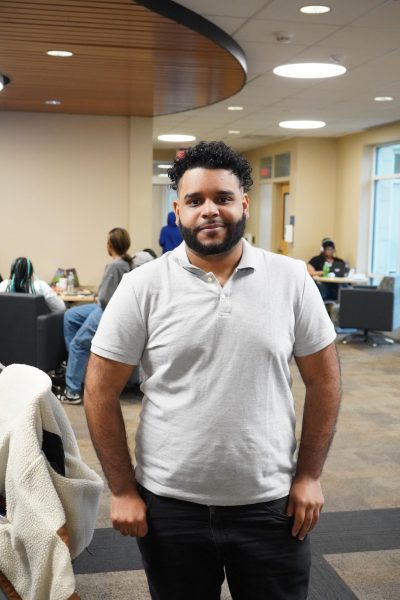
They see the situation as an everlasting, time-consuming problem for those with better things to do.
Brian Jean explains, “I feel like some people just use it and do not know why they are using it. Of course, there is entertainment.”
Damien Paez mentions his point of view:
“People are always on their phones and do not realize that they are on their phones all day. I was aware of it when I first went on my phone after waking up. The last thing I did before bed was go on my phone. If I do not have my phone, I get anxious, I get nervous. Like I don’t know what to do with myself.”
Both also brought up their addictions to the excessive use of TikTok.
“TikTok is like fast entertainment for us,” said Brian Jean
“Especially TikTok, it is so bad. I am about to do something, and I am just on TikTok and keep going. It has been 30 minutes. I needed to do this, but I am on TikTok and keep going. It is so bad,” explained Damien Paez.
Many other students around Mercy University have expressed their thoughts on it.
Carlos Lorenzo, a Mercy Student majoring in Business/Entrepreneurship, gave his thoughts about addiction.

Carlos said, “It’s a mix of good and bad. It is good to be on social media because it has different outlets and diverse ways to grow on the platform.”
“I have been a victim of social media addiction sometimes because there are times when I am on TikTok, and I am on TikTok just swiping along. Swiping on Instagram is a lot of time wasted.”
Mercy Student Muhammad believes social media has been a positive light for those who use it.
“I believe social media can be how you use it because you can do good with it, yet now social media can do more harm. But I never give in to social media because social media is a tool to use.
Muhammed made a good point .
“What we do with that tool is on us. We can use that tool to promote things, waste time, and promote things that should not be encouraged. You can use social media to learn more things, like the Israel and Palestine situation. Social media is helping people learn more about what is going on. Yet people use social media to waste time instead.”
Another student gave a great insight on the usage of social media, being an addiction to those who have problems avoiding it.
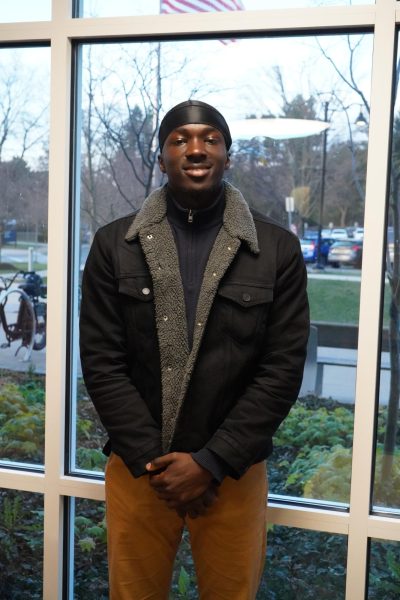
Khaliq’s take on social media addiction is simply the way people present themselves and paint themselves different people. Putting on a persona.
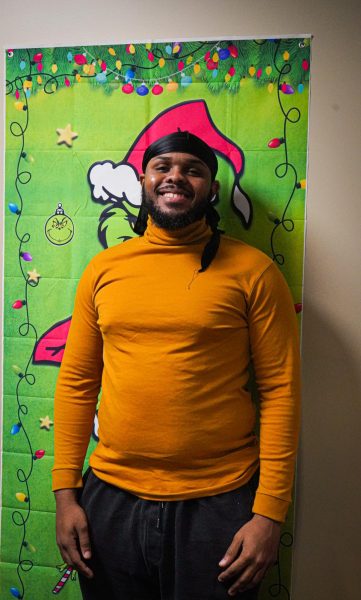
Khaliq added, “There was a time that I was close to being addicted to social media. I see all these gym videos and people talking about what they do, and it made me get stuck. I think people forget that we can add so much to this world and that we do not have to look at everybody’s post. We can just put our own post out there. We should look with intention. Like I’m just trying to see something entertaining that helps you, things that are beneficial to us.”
Social Media Use has greatly increased in college students recently, and therefore addiction has only gone up as well. In 2014, about 60 percent of college students were on social media, but that number has spiked to 80 percent, with the number only projected to go up with the increase in popularity in apps such as Tik Tok. It is becoming more and more part of the college life, as social media is a valuable tool that helps college students stay up to date with friends, family, sharing news and information, and staying up to date with interests and debating about them online such as sports, music, movies, TV, and entertainment.
There have been many studies conducted on the impact of social media addiction, although it is not listed as an addiction disorder, according to Cosumnes River College psychology professor Dr. Naomi Bahm. “Part of it is immediate gratification,” said Bahm. “Interactions can happen whenever, like it could be the middle of the night and you could still go on and look at people’s posts.”
Evidence is also starting to find that social media addiction can be linked to substance addiction, and a lot of symptoms are like those who use substances, according to the International Journal of Environmental Research and Public Health. Some of these symptoms include things like spending more time on social media sites than needed, or not being able to avoid looking at the phone, having trouble being able to cut down, addiction interfering with school, work, or other obligations needed in everyday life, and having a great deal of time needed to spend to complete activities because of social media use.
There are quite a few reasons why social media can be so addicting, with one of the main ones being that social media increases dopamine signals in the brain. Dopamine in the brain is a neurotransmitter that is correlated with pleasure and excitement that gives the brain a certain type of thrill. Not everyone gets this type of thrill when activating social media, but it certainly separates those who became addicted and those who don’t.
These positive feelings dopamine gives one are only temporary and do not last very long, therefore people commonly want to go back on these apps to get more of the thrilling experience. Certain ways dopamine on social media websites can be triggered is looking at pictures such as on Instagram, watching videos such as on Tik Tok or YouTube, commenting and making threads such as on X/Twitter, messaging people which is possible on all platforms, and any other way a user can find that can use a lot of their time.
The downside of social media addiction, even if there is a lot of good in connecting with friends, and having an avenue to be able to talk about what one wants, is that addiction could be correlated with mental health issues. Some possible downsizes of social media could include low self-esteem, increased loneliness or wanting to venture away from people, anxiety or depression, fear of missing out on things, ignoring problems in real life, and reduced empathy, among other issues.
Social media can also be a toxic place, and often putting oneself out there and representing oneself the wrong way can lead to a lot of heat from people, which can make for bad mental health as cyber bullying is another aspect of it. Cyber bullying is bullying online, and it is becoming more and more common as social media is becoming more popular over time.
There are a few key signs to tell when someone may have social media addiction, which include negative effects on his or her schoolwork or ignoring work do to chronic use of social media, increased use while with people in real life causing the person to ignore them, relying on social media to help one with issues or fulfill happiness, irritability when social media use is cut, and anger when using the site in conjunction with certain events on it happening.
All of these signs are keys to tell you breaks could be needed, and the social media usage is piling up, and it could overall effect your health in the long run.
81% of U.S. adults – versus 46% of teens – favor parental consent for minors to use social media
https://www.addictioncenter.com/drugs/social-media-addiction/
Dopamine, while known as a pleasure chemical, is not a chemical a hormone but instead a neurotransmitter and when activated gives someone a sense of pleasure within a person, it instead reinforces it. Making someone more likely to perform the action once again.
Having too much or little could cause major issues and could cause issues from a major imbalance.
It can be found in substances like caffeine products and can be increased by using other drugs like cocaine, opiates, nicotine, and cocaine. Since it is a neurotransmitter in the brain it can not be taken away but the government has regulated medication for people safety with mental issues but it needs a prescription.
According to Pew Research Center, “Young adults were among the earliest social media adopters and continue to use these sites at high levels, but usage by older adults has increased in recent years.”
With the highest percentage of users being 18-29 year old overall at 7 percent to 84 percent over the last few years and even the older demographic growing with 45 percent has used at least one site.
From what was once 3 has jumped to 66 percent in Rural and Urban areas, which was 6 percent of people 76 percent has used or has formed social media.
It is now a major part of people’s lives that people visit social media sites daily from other parts of life.
Pew Research adds that adults are in favor of social media being a “Big Brother” type figure of figures and in favor of new policy with 81 percent of adults, and 56 perecnt of teens are also in favor. At the same time many teens are also against it.
Bu why all the policy changes? It is protect and allow kids to make accounts.
What other trouble and issue can come from social media? Mental health. Nealry 1/3 of the users online over three hours a day are at risk to exhibit some symptoms of poor mental health
From the Social Media Addiction Center, “In fact, psychologists estimate that as many as 5 to 10 perent of Americans meet the criteria for social media addiction today.”
It has been observed that the brain reacts the same way to a notification and message, it raises the dopamine levels of the brain like addictive substances. Rewarding the act and making people spend more time online.
The addition center explain why this is an effective solution.
“Doing the same thing over and over again and expecting a different result is — at the very least — illogical.”
The simplest solution, and perhaps the most realistic one, says the center, is to simply deplug and take a break from time to time. Turn off the devices, chat with friends in person, read, go for a walk or do a physical activity recharges the mind and soul.
Listening to friends, instead of the need talking about oneself, also helps improve friendships and the soothes the need to try and impress.
These platforms should not be used to sustain an existence in a non-virtual world. Instead, put the device down and discover a new hobby.



